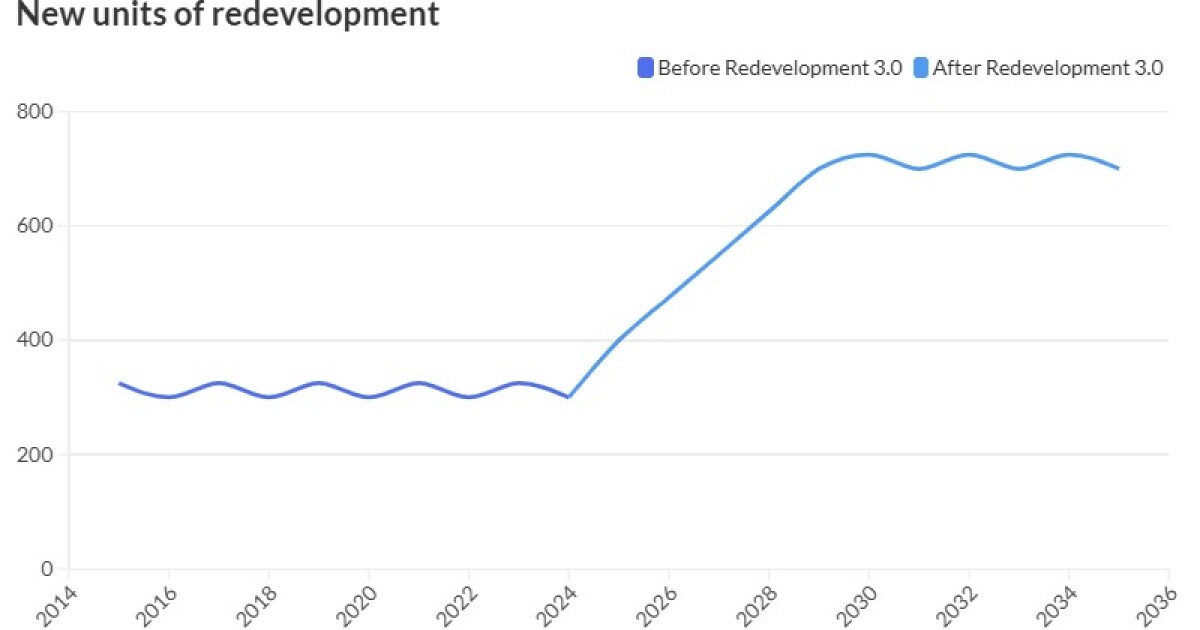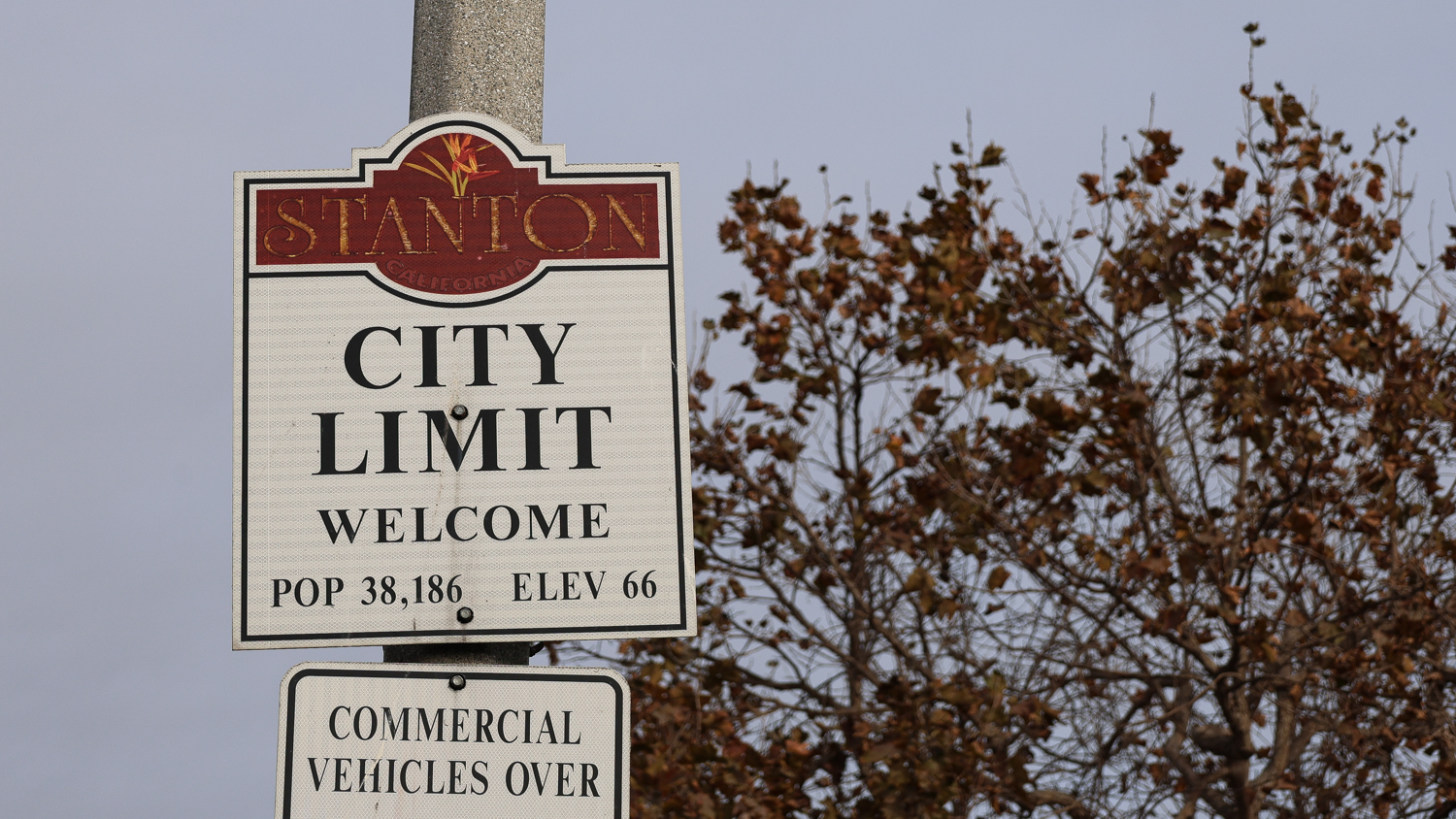- The AI stock trade is starting to shift beyond the ‘Magnificent 7’
- Doge Meme Makes Waves in U.S. Senate with D.O.G.E Initiative
- Ciscom Corp Secures $12.8M Non-Dilutive Financing Package to Fuel M&A Growth Strategy
- 10 tips from experts to help you change your relationship with money in 2025
- BlackRock is trying to avoid the hot seat as GOP takes power
California’s shortage of affordable housing poses a serious threat to the state’s long-term economic health and well-being. You don’t need a Ph.D. to figure out that an affordable housing shortage hampers labor force growth, stifles business expansion and new business formation, erodes the tax base, and contributes to homelessness, drug abuse and street crime.
You are viewing: It’s time for Redevelopment 3.0 in Calif. — to finance affordable housing
To no one’s great surprise, “overwhelming majorities across the state view housing affordability as a big problem,” according to a recent statewide survey conducted by the Public Policy Institute of California.
When gubernatorial candidate Gavin Newsom pledged in 2017 that he would lead an effort to develop 3.5 million new housing units by 2025, he captured voter’s attention and deservedly so. Unfortunately, it is now 2025 and California is millions of housing units short of the governor’s laudable goal.
The state has spent many years and billions of dollars trying to solve this problem, but to no avail. If the State is ever going to solve this problem, then new and innovative solutions are needed.
The splendor of California’s majestic coastline and its soaring mountains, and the creative genius of Hollywood and Silicon Valley, will not stave-off the consequences of failure indefinitely.
All of which is to say, it’s time for Redevelopment 3.0.
Tough Times Call for Tough Measures
California faced a serious financial crisis in 2011, with an unprecedented $25.4 billion budget deficit that if left unchecked, would have resulted in deep automatic budget cuts to K-12 public schools under the state’s funding formula.
Against this backdrop, then-Gov. Jerry Brown took decisive action by cutting the take-home pay of most state employees, cutting spending on Medi-Cal and CalWORKs, cutting financial support for higher education, rallying public support to increase personal income taxes, establishing a Rainy Day fund, enacting pension reform and state/local government realignment, and yes, eliminating redevelopment agencies, among other measures.
See more : FINANCE: Krouth & Lee – Los Angeles Business Journal
These were not easy or popular measures. They were bold, complicated and very unpopular, but California faced a crisis that called for tough measures, and the state rose to the challenge.
The shortage of affordable housing now confronting California is another such crisis that once again calls for bold, decisive action by our elected officials.
It Takes a Village
Building a sustainable pipeline of affordable housing projects is a lengthy and complex process in which many parties play a vital role including local government officials, housing developers, community organizations, financial institutions, and the public at-large. It takes a village!
It is also very time-consuming and costly to build housing in California. A great deal of time and money is required to acquire land, design a project, obtain local government approvals, obtain financing commitments, mobilize skilled labor and material, and make infrastructure improvements.
And affordable housing projects can be derailed at any stage, which discourages participants who can ill-afford to waste time and money on risky projects.
When you consider the totality of what’s required to build a sustainable pipeline of affordable housing projects, it’s no surprise the state’s efforts have fallen short.The current system whereby Sacramento periodically doles out funds to ‘deserving’ projects is certainly helpful, but woefully inadequate, as are half-measures like the Regional Housing Needs Allocation (RHNA) process. Similarly, the spate of newfangled ‘Redevelopment 2.0’ policies enacted by the state including EIFDs, CRIAs and IRFDs have done precious little to alleviate the shortage of affordable housing.
Building a sustainable pipeline of affordable housing projects requires a permanent, reliable source of equity. Equity is the ballast that keeps projects afloat while participants engage in the time-consuming, costly and risky development process. Equity gives participants the confidence they need to invest their own time and limited resources in a project. The affordable housing industry is extremely nimble and creative, and a permanent, reliable source of equity may be all that is needed to kick-start a robust pipeline of affordable housing projects.
Redevelopment 3.0
Redevelopment 3.0 should focus on providing a permanent, reliable source of equity with which to build a sustainable pipeline of affordable housing projects.
According to the State Board of Equalization, California’s 482 cities had aggregate locally assessed value of about $6.9 trillion in fiscal 2023/24. Under Article XIIIA of the California Constitution, a 1% ad valorem property tax base rate is levied on all taxable property in the state; thus, owners of taxable property in California cities paid about $68.6 billion in base property taxes last year, which revenue was shared among each city, county, and overlapping school districts and special districts.
See more : Making Change: How Financial Institutions Empower Communities
Under my proposal, 2% of the annual base property tax revenue that is collected from within each California city would be allocated to affordable housing projects in that city.
The mechanics are straightforward. Multiply a city’s total taxable assessed value by the 1% ad valorem property tax rate to get the total property tax revenue collected from within that city, and then take 2% of that amount and deposit it into that city’s Affordable Housing Special Revenue Fund.
If my proposal had been in effect during fiscal 2023/24, about $1.4 billion of property tax revenue would have been available to fund affordable housing projects in California cities. In the aggregate over the next five years, Redevelopment 3.0 can provide about $7.7 billion of equity which, when combined with tax credits, senior debt, subordinate debt and other funding sources, can support about $54.1 billion of affordable housing projects in California cities.
Naturally, affected counties and school districts won’t be happy that some of their property tax revenue is used to fund affordable housing. However, total assessed values in California cities routinely increase by more than 2% per year due to new construction and reassessments upon sale, so it is unlikely any county or school district will suffer a decrease in their property tax revenue. At most, they will forgo a small portion of the growth in their revenue.
Finally, not all cities want more affordable housing projects, which is their prerogative. However, any revenue that is not used for affordable housing within three years should be reclaimed and deposited into a Regional Affordable Housing Bank for projects elsewhere in the region. Use it or lose it is a powerful motivator.
Conclusion
When California faced a crisis in 2011, the state took bold steps to address the problem. The current shortage of affordable housing is another such crisis, that once again calls for decisive action. The real question is whether the state still has the capacity to ‘meet the moment’ or is California now so hidebound that decisive action is beyond its means.
Redevelopment 3.0 is not a panacea, but it can be the impetus that sets California on the path toward solving one of its most intractable problems.
Steven Gortler is a Registered Municipal Advisor based in San Francisco.
Source link https://www.bondbuyer.com/opinion/its-time-for-redevelopment-3-0-in-calif-to-finance-affordable-housing
Source: https://summacumlaude.site
Category: News







